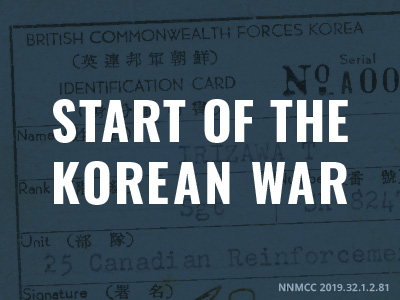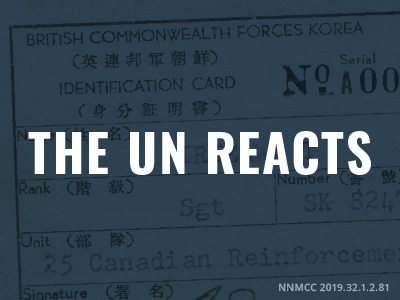As additional UN troops arrived in Korea, the North Koreans and Chinese troops were forced back to the 38th Parallel. From that point, the war became a stalemate, with the frontline located close to the 38th Parallel (Berton, 2001, p. 563).
This series of BBC maps shows the major troop movements that occurred in the Korean War between June 1950 and June 1951, before the war became a stalement (British Broadcasting Corporation, n.d.):

Armistice negotiations began on July 10, 1951 at Kaesong, Korea. Negotiations were later moved to Panmunjom, 13 km west of Kaesong in neutral territory between the opponents (Granfield, 2004, p. 46). The US and China concluded that the costs of reuniting North and South Korea were too high; Korea would continue to be divided between the two regimes. Negotiations attempted to reach a ceasefire and a peace settlement. They included discussions on establishing a demarcation line between North and South Korea and the return of prisoners.
Much of the fighting occurred in the skies for the next two years, between American pilots and pilots from the Soviet Union dressed in Chinese uniforms and flying planes with Chinese markings (Millett, 2025).
While the talks went on, the ground war did not end; fighting continued for two more years with opposing armies constantly facing each other in trenches approximately a mile apart for the next two years. “Because the Americans had overwhelming air power, the Chinese lived like moles in a maze of tunnels and dugouts held up with wooden pillars, as in mine shafts. The Canadians lived and slept in bunkers dug into the walls of their trenches. …the larger command post bunkers were solidly built with a log framework, layers of sandbags, corrugated metal, waterproofing, and at least five feet of rock and dirt on top to provide protection from the constant enemy shellfire (Berton, 2001, p. 565)”.
The Eighth Army conducted a major autumn ground offensive in 1951, aided by British and South Korean divisions, which stalled in heavy fighting (Millett, 2025). This campaign resulted in many casualties on all sides, more than one third of them American.
In November 1952, General Dwight Eisenhower, former NATO commander and supreme commander of Allied forces in Europe during the Second World War, became US President. Americans were becoming tired of the Korean War. The election was considered a referendum on the war, and Eisenhower considered his victory a mandate to end the war as soon as possible (Berton, 2001, p. 572).
From April 20 to May 3, 1953, a prisoner exchange was carried out at Panmunjom. Chinese and North Korean prisoners were sent back to North Korea; South Korean and UN prisoners were sent to South Korea. Beginning on August 5, 1953, a second prisoner exchange took place over six weeks. Twelve thousand prisoners were returned to the UN by the Communists; UN forces returned seventy-five thousand prisoners to the Communists (Granfield, 2004, p. 123).





